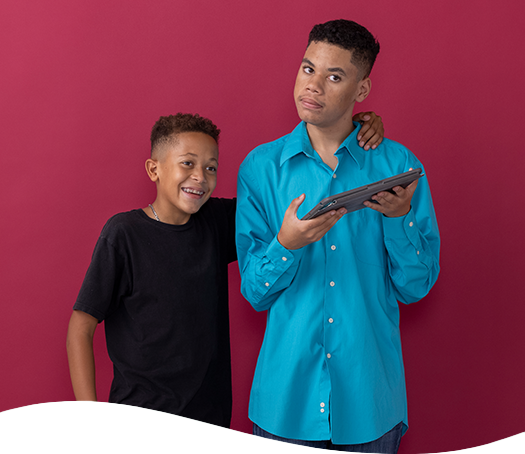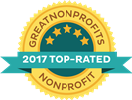Resources
Education

Every child in the United States has a right to a public education, this includes children with Autism and other disabilities. The Individuals with Disabilities Education Act (IDEA), is the federal law that guarantees a free and appropriate public education in the least restrictive environment for every student with a disability. The law’s 2004 reauthorization (P.L. 108-446) further defined children’s rights to educational services and strengthened the role of parents/care providers in their children’s educational planning process. This means that the education for students enrolled in public school should come at no cost and should be appropriate for their age, ability, and developmental level.
The law specifies that educational placement should be on an individual basis, not solely on the diagnosis or category of disability.
Parents/care providers have a voice in the educational process. But keep in mind that IDEA requires that an appropriate educational program be provided, but not necessarily the one that is “ideal” for every child. It is important that parents/care providers work with the school to get the educational support and services the student needs.
Educational planning for students with Autism often addresses a wide range of skill development, including academics, communication and language, social skills, self-help skills, behavioral issues, self-advocacy, and leisure-related skills. It’s important to consult with professionals trained specifically in Autism to help a child benefit from their school program. Obtaining a range of opinions is also useful.

Statistics
- The National Center for Education Statistics maintains a large database of special education demographics.
- The United States Department of Education has dedicated special education statistic resources.
- Approximately 11% of special education students in the United States receive education under the eligibility of Autism.
IEP Information
The Individualized Education Program (IEP) is a written document that outlines a child’s education. As the name implies, the education program should be tailored to the individual student to provide the maximum benefit. The keyword is individual. A program that is appropriate for one child with Autism may not be right for another.
The IEP is the cornerstone for the education of a child with a disability. It should identify the services a child needs so that he/she will meet their learning objectives during the school year. It is also a legal document that outlines:
- The child’s special education plan (goals for the school year)
- Services needed to help the child meet those goals
- A method for evaluating the student’s progress
The objectives, goals, and selected services are not just a collection of ideas on how the school may educate a child; the school district must educate your child in accordance with the IEP.
To develop an IEP, the local education agency officials and others involved in the child’s educational program meet to discuss education-related goals. By law, the following people must be invited to attend the IEP meeting:
- One or both of the child’s parents/care providers
- The child’s teacher or prospective teacher
- A representative of the public agency (local education agency), other than the child’s teacher, who is qualified to provide or supervise the provision of special education
- The child, if appropriate
- Other individuals at the discretion of the parent(s)/care provider(s) or agency (e.g. a physician, advocate, or neighbor)
IEP meetings must be held at least once annually, but may be held more often if needed. Parents/care providers may request a review or revision of the IEP at any time. While teachers and school personnel may come prepared for the meeting with an outline of goals and objectives, the IEP is not complete until it has been thoroughly discussed and all parties agree to the terms of the written document. Parents/care providers are entitled to participate in the IEP meeting as equal participants with suggestions and opinions regarding their child’s education. They may bring a list of suggested goals and objectives as well as additional information that may be pertinent to the IEP meeting.
The local education agency (LEA) must attempt to schedule the IEP meeting at a time and place agreeable to both school staff and parents/care providers. School districts must notify parents/care providers in a timely manner so that they will have an opportunity to attend. The notification must indicate the purpose of the meeting (i.e., to discuss transition services, behavior problems interfering with learning, academic growth).
Learn more about:
- The IEP Meeting
- Related Services
- Teacher/Staff Requirements
- Goals/Objectives/Evaluation

After an evaluation has been done, the IEP meeting will be scheduled. Parents/care providers are entitled by law to attend and participate in this meeting, and must be given ample notification of the time and place. Parents/care providers should also request a copy of the evaluation results prior to the meeting so you have time to review them.
When preparing for your IEP meeting, consider the following:
- What is your vision for your child – for the future as well as the next school year?
- What are your child’s strengths, needs, and interests?
- What are your major concerns about his/her education?
- What has and has not worked in your child’s education thus far?
- Does the evaluation fit with what you know about your child?
- Are there any special factors to consider, such as communication needs or a positive behavioral intervention plan?
While the IEP meeting is meant to develop an education plan for the student, it is also an opportunity for families to share information about their child and their expectations and what techniques have worked at home. If for some reason parents/care providers disagree with the proposed IEP, there is recourse.
Content of the IEP
The IEP should address all areas in which a child needs educational assistance. These can include academic and non-academic goals if the services to be provided will result in educational benefit for the child. All areas of projected need, such as social skills (playing with other children, responding to questions), functional skills (dressing, crossing the street), and related services (occupational, speech, or physical therapy) can also be included in the IEP.
The IEP (see statute text) should list the setting in which the services will be provided and the professionals who will provide the service. Content of an IEP must include the following:
- A statement of the child’s present level of educational performance. This should include both academic and nonacademic aspects of his/her performance.
- A statement of specific, well-defined goals that the student may reasonably accomplish within the next 12 months. These goals should directly relate to a student’s disability-related needs, and include baseline data supported by the student’s present level of academic and functional performance. It must be clear how goal progress will be monitored and reported
- If your child takes an alternative assessment aligned with alternate achievement standards (ex: Common Core Essential Elements), their IEP goals must include a description of short-term benchmarks or objectives. These objectives help parents/caregivers and educators know whether a student is progressing, or is in need of additional support.
- A description of all specific special education and related services, including individualized instruction and related support and services to be provided (e.g., occupational, physical, and speech therapy; transportation; recreation). This includes the extent to which the child will participate in regular educational programs.
- The initiation date and duration of each of the services, as determined above, to be provided (this can include extended school year services). You may include the person who will be responsible for implementing each service.
- If your child is 16 years of age or older, the IEP must include a description of transition services (a coordinated set of activities to assist the student in movement from school to post-secondary education, employment, or other activities).

Post-Secondary
Transition Planning
Planning for transitions and life after high school is imperative. This is the process that prepares students for adult life after they leave high school. Transition is the bridge between school programming and adult life that might include higher education, employment, independent living, and participation in adult life in the community.
Transition services are mandated under IDEA for children with disabilities ages 16 and up. An Individualized Transition Plan (ITP) is developed for each student. The ITP identifies the desired and expected outcomes for each student and their families once they leave school as well as the support needed to achieve these outcomes.
- The Center on Secondary Education for Students with Autism Spectrum Disorders: The Center on Secondary Education for Students with Autism Spectrum Disorder (CSESA) is a research and development project funded by the U.S. Department of Education that focuses on developing, adapting, and studying a comprehensive school and community-based education program for high school students who experience Autism.
- The National Technical Assistance Center on Transition: The Collaborative (NTACT:C) is a Technical Assistance Center co-funded by the U.S. Department of Education’s Office of Special Education Programs (OSEP) and the Rehabilitation Services Administration (RSA).
Info & Resources
Many adults with Autism pursue higher education, earning degrees in their preferred field of study. Many colleges have resources dedicated to supporting students with disabilities such as the student disability service center which may be a component of the college program or additive programs such as the College Internship Program that support students attending colleges and universities. There are also programs available that offer social, academic, career, and life skills support for students who have an intellectual disability that may co-occur with Autism and are not pursuing an academic degree. Information about this type of programming support can be found here.
The experience of attending college or university is a big transition for every student. For students with Autism it may require careful planning to ensure adequate support is in place. Unlike in high school, college and university students must disclose their need for accommodations for instructors and engage in self-advocacy to ensure appropriate accommodations.
Accessing the campus disability support center and inquiring about options for support is an excellent first step. Some of the accommodations that are commonly provided at colleges and universities include: testing accommodations, audio recording of lectures, note-taking services, assistive technologies such as speech to text software, priority class registration, and even housing modifications.
- Each college has a unique culture. Assessing the fit for the individual is important. Size, location, types of support, and academic programming should all be considered. Many adults with Autism report a great college experience, and with a little planning and preparation this can be true for you as well.
Resources:
- Think College: Think College is a national organization dedicated to developing, expanding, and improving inclusive higher education options for people with intellectual disability.
- College Internship Program: The College Internship Program (CIP) is a private young adult transition program for individuals 18-26 with Autism, ADHD, and other learning differences offering comprehensive and specialized services.
- The Office of Special Education and Rehabilitation Services has an excellent information resource on transition services.



